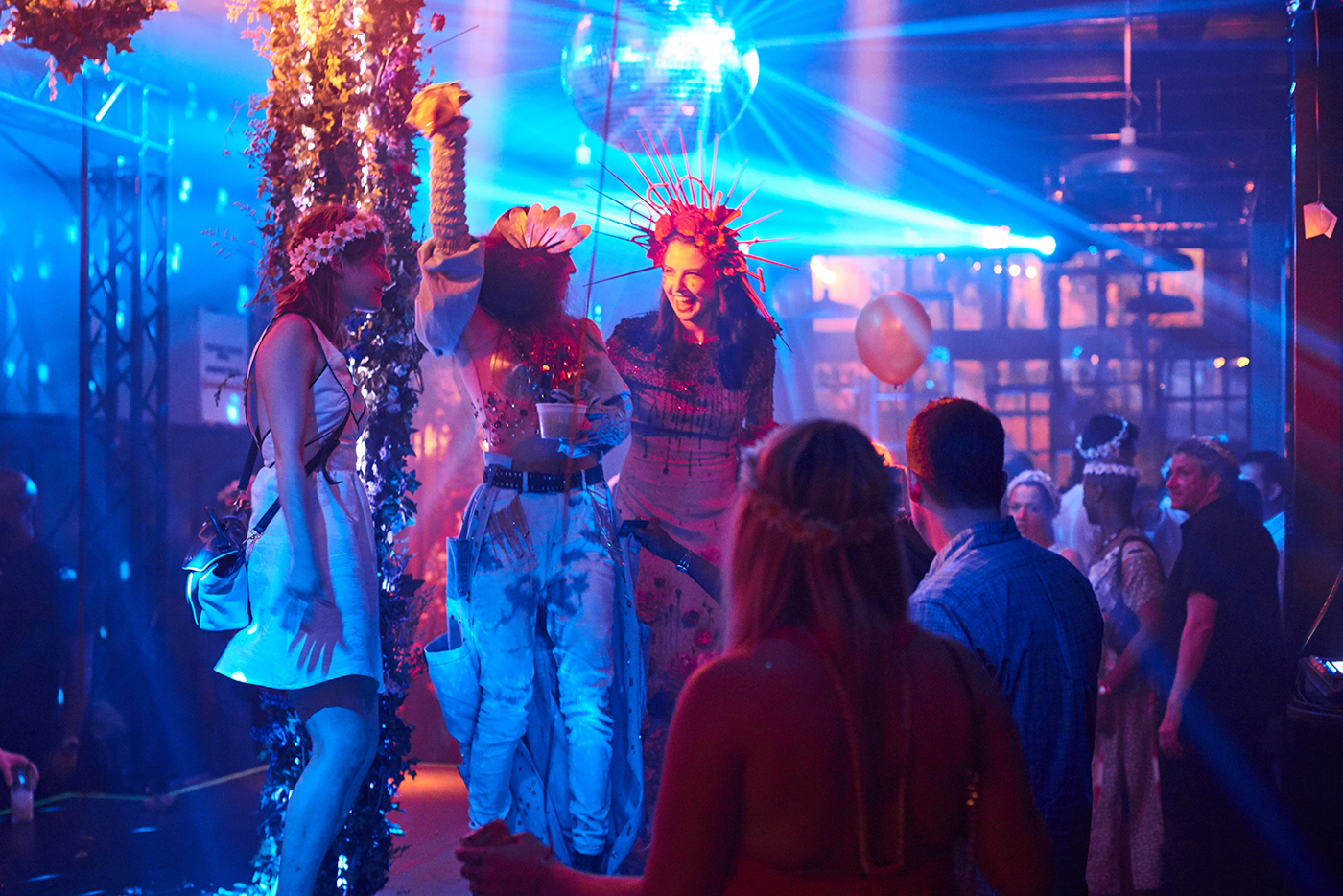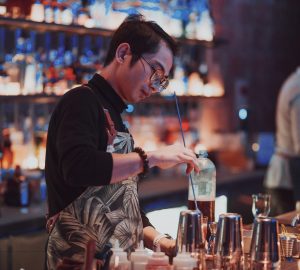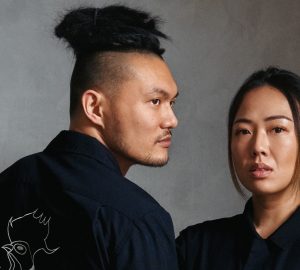How to score yourself a Spirited Awards nomination, why you’re dry shaking the wrong way and more lessons picked up by Jonathan White at this year’s Tales of the Cocktail.
1 Your first step to a Spirited Award is simple.
Nominate yourself. That’s the advice of the outgoing Spirited Awards chairman and host of the big night himself, Simon Ford. While nominations can be provided by anyone, Ford said that nothing beats it coming from the horse’s mouth: “The thing is, we believe nominations from the bars themselves. You can trust them to be in the right category more than nominations from others.” Even still, that’s no guarantee of immediate success – far from it. Ford explained the process: “You hope the judges notice the outliers and go there; then a bar makes the top ten one year; then more people visit and it makes the top four. It takes time.” People pay attention to nominations, Ford insisted, and you might even gain an advantage in a smaller market. That was the case for The Merchant Hotel in Belfast, in 2009, when it took three Spirited Awards – and its ex-bartenders Jack McGarry and Sean Muldoon have taken plenty more awards since. Visas and business plans have been approved based on Spirited Awards, and even nominations. When something can be this life changing, don’t wait for someone else to take that first step. Hustle up. Invite the judges to try your bar when they’re in the area, make a splash on social media, get in international media. You’ve got until next spring.
2 Anyone can get involved…
Phillip Duff, the director of education for Tales of the Cocktail, was fairly clear on what it takes to make it onto the seminar program (there were 84 seminars in 2016, with brand education seminars on top of that). The rules have changed since the early days, but anyone willing to commit the time – rather than a drunken promise – stands a chance to present. “People have to sign up for deadlines. They have to prove they are worth USD65 (¥464),” said Duff. You also need to impress the 40-strong committee located around the world that judges the 200-300 submissions each year – with Duff having a final veto for “reasons of insanity”. If you really want to up your chances of delivering a seminar, get well known. Take to social media, offer your services as an expert, go on panels. The message was clear: “You have to put yourself out there.”
3 at any point of their journey in the industry.
Whether you’re starting out on the road to becoming a bartender or just looking to expand your horizons, there are roles for everyone at Tales. The Cocktail Apprentice Program, which makes every drink for every seminar, takes 70 participants – known to the world as CAPs – every year. There is a very clear pathway for each of those years according to Don Lee, opening beverage director at PDT and once of Momofuku in New York: “The first year, you do what you are told; the second year, you lead two people; the third year, you lead 15; and the fourth year, you lead 70.” With such a small number of places and so many applying, there has to be strict screening. Lee and his team ask three questions: “Can we help you? Can you take that opportunity? Will you take that back with you?” Inevitably most of the 650 applicants are turned away, with only 40 new CAPs accepted each year. This year these included bartenders from Hong Kong, Singapore, Sweden and even Ghana. If that’s too daunting, you could always back your drinkmaking skills by entering the annual competition to create the official cocktail for the week. It’s open to bartenders worldwide and as we’ve all said before, it’s just one drink.
4 Keep an eye on hotel bars.
From the golden age of the cocktail to the invention of boutique hotels via the last few winners of the best bar in the world, hotel bars have long been at the forefront of the industry. But the term “hotel bar” could be about to change. Expect to see more “Bed and Beverage” concepts – essentially a bar with a handful of rooms, somewhere between a traditional inn and the super-exclusive boutique experience with bar-side check-ins and in-room mixology. Bartenders might become co-creators within hotels – as with the Broken Shaker at the Freehand (Miami), or Dandelyan at the Mondrian (London) – or open their very own hotels such as the 37-room Grand Pigalle in Paris, from the Experimental Group (of Experimental Cocktail Club fame). Bartenders have long perfected an experience; this stretches that experience further still.

5 Rancio in whisky.
Rancio – from the French for “rancid” – is a term especially known to cognac, sherry and madeira, used (positively) to describe off-notes in well matured stock. Scottish whisky writer Dave Broom argued it also has a role in whisky – especially in notes of unripe tropical fruit – although he admitted it had been a tough task to get distillers on board with the theory. Happily, he was backed up by an explanation of rancio in scotch from Arielle Johnson, head of research at the MAD symposium in Copenhagen and resident scientist at Noma. To cut the detail short (it’s complicated and available on scotchwhisky.com), it starts in fermentation, which Broom argued is more important to a whisky’s flavour than the wood influence (“exaggerated”, according to what Canadian master blender Don Livermore has told Broom). The whiskies then need to be stored in dunnage warehouses, in “knackered casks” and – perhaps the most important factor – for a long time. Humans have long been fascinated with the ideal point of decay, and as rare as describing rancio in scotch is right now, the new understanding means distillers and blenders could soon be looking to produce it deliberately.
6 Not just flavour. Sensation…
Flavour designer Derek Elefson and senior flavour chemist John Baughman from Mane, an industrial fragrance and flavour manufacturer, held a seminar alongside Ryan Chetiyawardana and Iain Griffiths from London’s White Lyan, targeting how sensations and perceptions could enhance flavours in cocktails. The discussion explored how bartenders could bring sensations into drinks – as simple as a touch of horseradish oil to really make raspberry flavour pop. The key is to experiment. “We list way less of what is in our drinks on the menu,” explained Griffiths. “There are many more ingredients.” The pair pointed out that while there aren’t the same regulations around drinks as there are around food, safety was paramount and they regularly seek out experts. So what flavours are going to be big? According to Elefson, surveys suggest 75 per cent of Americans want more spice in their food and drink, which is why they predict a big buzz around Sichuan peppercorns and their accompanying mala sensation, along with Brazilian cress jambu – also known as the electric daisy – which causes tingling in the mouth.
7 …delivered in a variety of ways.
Where else can bars go in their quest to enhance guest’s sensory experience? According to Elefson, technology manufacturer Global Ionics are using small electrical currents to enhance drinks, meaning salty drinks seem saltier, sweetness appears amped up and, most counter-intuitively, drinks taste colder. Engaging other senses is also on the menu. “Sound and pressure,” said Griffiths, “are the factors least explored in the industry.” He took the Bloody Mary as an example, which research last year had claimed tastes better onboard a plane (noisy situations suppress sweetness, but enhance umami). Vibrational theory will also be further investigated, with one Japanese company already having developed a vibrating fork, and Johnnie Walker releasing its Boldest Glass, which brought vibration to drinkers through a specially linked music track.

8 Inclusiveness includes rewards.
As professions go, working behind the stick seems pretty open to anyone. But there is work still to be done, argued the Gender Intelligence Group – explaining how “understanding gender difference creates value”. When it comes to guests, women make the majority of consumer decisions in the United States, according to studies, and they “join brands”, meaning they act as brand ambassadors for the businesses they like (without being paid). But there’s a flipside. Women tend to share bad experiences just as enthusiastically on social media. For your own staff, putting inclusiveness on the agenda might mean you keep hold of employees for longer. Either way, embracing the challenge invites financial success.
9 Make yourself uncomfortable.
Going back to your roots to find success was a seminar in which Jim Meehan and Ryan Chetiyawardana discussed how they managed to make their careers much more than just making drinks at a single venue. The path does not need to be barback to bartender to bar manager to opening your own bar, they reckoned – just as not everyone should go to university after high school. That said, both highlighted the benefit of education, with Meehan saying it made him a “more richly textured human being” and Chetiyawardana explaining how it got him out of his bubble. Being uncomfortable is key. “Surround yourself with people whose talents and skills terrify you,” Meehan said, “and work for someone who makes you feel vastly underqualified.” If you really want to get out of your comfort zone as a bar owner, then hand over the reins to one of your bartenders, he added. “So much could be learned by every bartender running their own bar for a week.” You learn from failing, agreed the pair, with Meehan stating he learnt nothing from PDT because it worked so well. Bartending is a career that can take you anywhere, so travel and work (legally), but most of all be interested in other people and what interests them, said Chetiyawardana. Inspiration can come from all sources, too: Meehan credits his multi-pronged career to seeing how hip hop artists were expanding beyond music. He asked himself how he could bring cocktail culture to the world outside of a glass.
10 You’re dry shaking the wrong way round.
Or at least that’s what science and arguably common sense would dictate – why would you do a dry shake and then immediately make it wet by adding ice? Shake the ingredients to mix them, lose the ice and only then dry shake for even better texture that is then uninterrupted. The pair peddling this controversial, but strangely logical, stance were the curious bartender himself, Tristan Stephenson, and his mythbusting partner Jake Burger of Portobello Road Gin. It was one of many fact-based views backed up by fellow “Liquipedia” panelist Jeffrey Kluger, science editor at Time Magazine. Other popular myths debunked included: alcohol killing brain cells (no – it damages the routes between them); you get more drunk on planes (sort of – but you definitely become more emotional, which is why you cry at films); and Mexican Coke being superior to American (not exactly – food writer J Kenji Lopez-Alt has proved you want American Coke in a glass bottle with Mexican labels). Other tidbits: it is theoretically possible to drink yourself sober; Haiti has the highest concentration of distilleries of any country; and Brazilian Campari still uses cochineal (and is therefore ripe for similar Mexican Coke cachet among bartenders). Oh, and you can shake a cocktail in space but you can’t stir it.

11 Save yourself a fortune and plenty of time.
Whether it is taking a tour of Houston’s cocktail scene, without ever stepping foot in Texas, or trying the drinks that have gotten Copenhagen’s Ruby international recognition, the drinks world really does descend on New Orleans for Tales – meaning you don’t have to rack up air miles to know what’s going on far from home. Even better, there’s a mix of both the biggest names in the game and the up-and-comers. Picture the scene: industry veteran Salvatore Calabrese’s Bound by Salvatore appearing next to The Cromwell in Vegas, who were slinging drinks a few feet away from this year’s Chivas Masters winners, The Beach Brothers.
12 Tales of the Cocktail is just getting started.
Tales of the Cocktail has come a long way in the 14 years since it began, but it retains some pretty bold ideas of what it still wants to achieve. Whether that is by using the festival to inject its home, the city of New Orleans, and its hospitality businesses with vital dollars (and trying to limit the influence of Airbnb), or something more conceptual. This year the Tales of the Cocktail website, and those using it as part of Tales 365, were integral in the production of the organisation’s first ever white paper, on gender equality in the industry. They are now working on one covering sustainability. This direction is something co-founder Ann Tuennerman says is the future of Tales, so the organisation is no longer simply defined by its flagship festival, but is seen as the TED Talks of the f&b industry – “a global thought leader”.
Tales of the Cocktail 2017 will be held in New Orleans from July 18-23 2017.
This article first appeared in Issue 45 of DRiNK Magazine.








